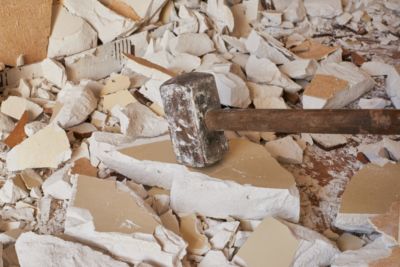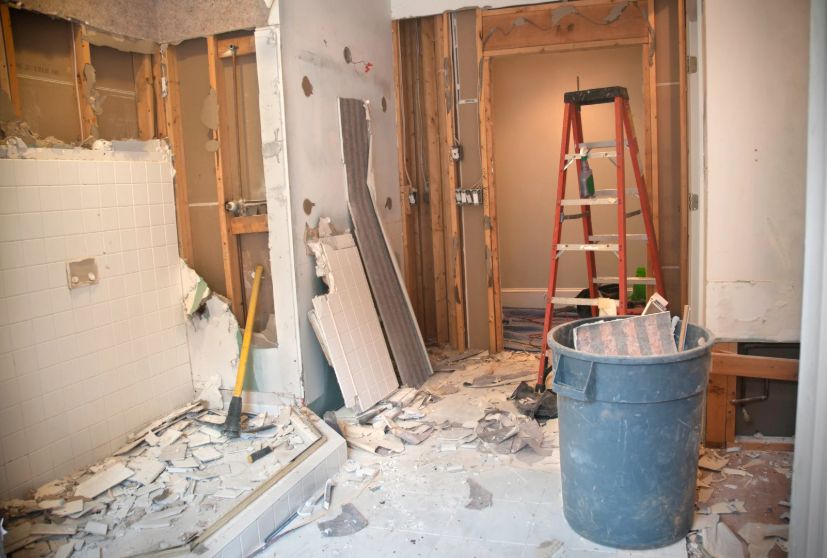
How Deck Removal Prepares Your Property for New Projects
September 3, 2025
The Benefits of Hiring a Demolition Cleanup Service
September 3, 2025Kitchen Demolition Common Mistakes to Avoid
Embarking on a kitchen demolition without a clear plan can quickly turn a manageable project into a chaotic ordeal. Skipping over the planning phase often leads to accidental damage to surrounding walls, floors, or cabinetry you intend to keep. Even small oversights, like not knowing where electrical lines or plumbing pipes run, can result in costly repairs or hazardous situations. Effective planning ensures that every step of the demolition is deliberate and safe. Mapping out which items need removal first, securing necessary permits if applicable, and having proper tools on hand can prevent a scramble mid-project.
Equally crucial is designating a space for debris collection and disposal. Without a clear strategy, debris can accumulate in walkways and work areas, creating hazards and slowing progress. Additionally, understanding the order of removal—starting with appliances, cabinets, and countertops—keeps the process efficient. Taking time to plan allows for better decision-making when unexpected challenges arise, minimizing risk while maintaining momentum. Ultimately, thoughtful preparation sets the stage for a smoother, safer demolition experience that protects both your property and your well-being.
Failing to Protect Surrounding Areas
One common pitfall during kitchen demolition is neglecting to protect floors, walls, and furniture outside the work zone. Dust and debris travel quickly, and unprotected surfaces can suffer scratches, dents, or staining. Using heavy-duty plastic sheeting, drop cloths, and painter’s tape around cabinets, counters, and appliances not slated for removal helps contain mess and reduces cleanup time. A lack of protection not only damages your home but also increases stress and prolongs the project timeline.
Protective measures should extend to ventilation and airflow. Opening windows and running fans can help keep airborne dust at bay, preventing respiratory irritation and minimizing dust settling on unaffected areas. Covering vents, sealing doorways, and wearing protective gear such as masks and goggles adds an additional layer of safety. These steps ensure that demolition remains a contained process, sparing your home from unnecessary damage while keeping everyone involved safer and healthier.

Overlooking Safety Gear
Demolition may appear straightforward, but the work involves sharp edges, heavy lifting, and airborne debris that can cause injury. Skipping essential safety gear can result in serious accidents. Gloves, steel-toed boots, goggles, and durable clothing protect against cuts, punctures, and abrasions. Respirators or dust masks are critical for avoiding inhalation of dust, insulation fibers, or chemical residues, which can lead to long-term health issues if ignored. Safety gear is not optional; it is a fundamental precaution that preserves both physical health and confidence throughout the project.
Even with proper tools and planning, accidents can happen. Wearing safety equipment significantly reduces the severity of injuries if a slip, fall, or object mishap occurs. Helmets and knee pads may also be beneficial during extensive work requiring crawling or overhead removal. Emphasizing safety from the beginning cultivates a mindset of caution and attentiveness, which in turn fosters efficiency, allowing the demolition to proceed at a steady, secure pace without unnecessary interruptions caused by preventable accidents.
Mishandling Electrical and Plumbing Lines
A critical mistake many make during kitchen demolition is underestimating the risks associated with electrical wiring and plumbing. Cutting or pulling appliances without turning off power or shutting off water can lead to shock, flooding, or extensive damage. Before demolition begins, confirm that circuits are deactivated and water lines are closed, and consider labeling pipes and wires to prevent confusion. Failure to account for hidden infrastructure can compromise safety and escalate repair costs.
Professional consultation is often advisable when dealing with complex systems. Even seemingly minor wires or pipes may be connected to critical household systems. By carefully inspecting and managing utilities, you prevent accidents that could affect not only the kitchen but the entire home. Prioritizing the safe handling of electrical and plumbing lines ensures a smoother demolition process, reduces emergency scenarios, and lays a secure foundation for the next stage of kitchen remodeling or reconstruction.
Underestimating Debris Removal Needs
Many homeowners begin demolition without a concrete plan for handling the resulting waste. Kitchens contain heavy appliances, cabinetry, countertops, and mixed materials that accumulate quickly. Underestimating the volume and weight of debris can lead to blocked pathways, repeated trips to dumpsters, or injuries from improper lifting. Preparing a dedicated area for debris staging, renting a suitable dumpster, or arranging professional junk removal services keeps the workspace clear and organized.
Proper disposal methods also influence the timeline and environmental impact. Separating materials for recycling, donation, or landfill ensures compliance with local regulations and promotes sustainable practices. Failing to plan for waste management not only prolongs the project but also introduces hazards as cluttered spaces increase tripping risks. Accounting for debris from the outset creates an efficient workflow, allows focus on the demolition itself, and helps maintain a cleaner, safer home environment throughout the project.
Using Incorrect Tools
Attempting a kitchen demolition without the right tools can slow progress and increase the likelihood of accidents. Common mistakes include using household tools for heavy-duty tasks or improvising with unsuitable equipment. Essential demolition tools such as pry bars, hammers, reciprocating saws, and utility knives enable controlled removal of cabinets, countertops, and appliances. Improvising can result in damage to surfaces, personal injury, and frustration that prolongs the project.
Selecting tools appropriate for specific tasks enhances precision and reduces strain. For example, a reciprocating saw is ideal for cutting through dense cabinetry or metal fasteners, whereas a hammer and pry bar facilitate controlled dismantling. Using the correct tools also streamlines debris removal by allowing for modular disassembly rather than destructive tearing. Investing time in gathering proper equipment ultimately pays off with a faster, safer, and more predictable demolition process that preserves both your property and your energy.
Ignoring Structural Considerations
A common oversight in kitchen demolition is failing to recognize structural elements that support walls, ceilings, or floors. Removing cabinets or walls without understanding load-bearing components can compromise the integrity of your home. Observing and respecting structural supports prevents costly mistakes and potential hazards. Consulting with a professional or researching your home’s construction helps identify which elements are safe to remove and which require reinforcement.
Structural awareness also affects the sequence of demolition. Removing superficial components before addressing underlying supports can lead to collapse or uneven surfaces that hinder remodeling. Proper assessment ensures that the work proceeds in a controlled and predictable manner. By respecting the home’s architecture and planning accordingly, you avoid costly repairs, maintain safety, and facilitate a smoother transition from demolition to renovation without unnecessary interruptions or risks.
Rushing the Process
Demolition can be exciting, prompting some homeowners to rush through the work. Moving too quickly, however, often results in mistakes such as damaged flooring, broken pipes, or uncontrolled dust spread. Allowing adequate time for careful, measured work ensures that each component is removed safely and efficiently. Patience prevents accidents and preserves the quality of materials that may be reused or recycled.
Pacing also gives room to adapt when unexpected obstacles arise. Delays in demolition are often caused by unanticipated structural issues, hidden utilities, or stubborn materials. Taking a deliberate approach reduces stress, improves safety, and allows for precise removal that protects your home. By balancing enthusiasm with caution, the project remains on track without unnecessary setbacks, resulting in a cleaner, safer, and more organized environment for the next stage of your kitchen remodel.
Disregarding Hazardous Materials
Kitchens often contain materials that require careful handling, such as asbestos, lead paint, or mold. Ignoring these hazards can expose you and your household to serious health risks. Identifying and managing hazardous substances before demolition is essential. Professional testing or consultation ensures that these materials are removed safely and in accordance with regulations. Overlooking these risks can result in fines, contamination, and long-term health consequences.
Proper disposal of hazardous materials is equally critical. Specialized containers, protective gear, and secure transport prevent contamination and exposure. Awareness and caution not only protect your family but also prevent delays caused by improper handling or accidental contamination. By proactively addressing hazardous materials, the demolition proceeds safely, minimizing environmental impact while prioritizing human health and legal compliance throughout the project.
Neglecting Clean Up and Organization
Leaving cleanup to the end of a demolition project often leads to cluttered spaces, increased risk of injury, and extended timelines. Regularly clearing debris as work progresses maintains order and allows for efficient movement through the kitchen. Using bins, carts, or a debris staging area keeps the environment organized and reduces hazards. Clean and organized workspaces are not just safer; they enhance efficiency and reduce stress, keeping morale high during a demanding project.
Organized cleanup also facilitates recycling and donation of materials, ensuring responsible disposal and minimizing environmental impact. A proactive approach to tidiness allows for easier transition into renovation stages and prevents small issues from snowballing into larger obstacles. Maintaining continuous organization throughout demolition protects both your property and your well-being while fostering a professional and controlled atmosphere, ultimately making the process smoother and less taxing on everyone involved.
Overlooking Professional Assistance
While DIY demolition can be rewarding, attempting a kitchen teardown without professional guidance often results in costly mistakes. Professionals bring experience, proper tools, and safety protocols that drastically reduce risk. Consulting or hiring experts ensures proper handling of utilities, structural components, and hazardous materials. DIY errors may seem minor at first but can lead to significant setbacks or expensive repairs if overlooked.
Even limited professional involvement can improve outcomes. Services such as partial demolition, debris removal, or consultation on structural concerns provide guidance and security. Combining personal effort with professional expertise creates a balance between cost savings and safety, resulting in a smoother, more predictable project. Acknowledging the limits of DIY capability allows for smarter planning, less stress, and a higher likelihood of achieving a successful kitchen renovation without unnecessary delays or hazards.
Conclusion
Kitchen demolition is an intricate task that demands careful preparation, attention to safety, and a mindful approach to managing debris, tools, and structural considerations. Avoiding common mistakes like rushing, ignoring hazardous materials, or mishandling utilities ensures that the process proceeds efficiently while minimizing risk. Strategic planning, proper protective measures, and adherence to safety protocols help maintain a controlled environment, prevent damage, and safeguard the well-being of everyone involved. Recognizing when professional assistance is beneficial can also greatly improve outcomes, saving time, money, and unnecessary stress while ensuring the project aligns with renovation goals.
For homeowners in Santa Rosa seeking a hassle-free approach to clearing out kitchen spaces, professional junk removal services offer an invaluable solution. North Bay Junk Removal specializes in handling heavy appliances, cabinetry, countertops, and mixed debris efficiently and safely. By partnering with experienced professionals, homeowners can avoid injuries, manage waste responsibly, and keep their homes organized during demolition projects. Contact North Bay Junk Removal in Santa Rosa, CA at 707-478-6817 to schedule service and ensure a smooth, stress-free kitchen demolition experience.


